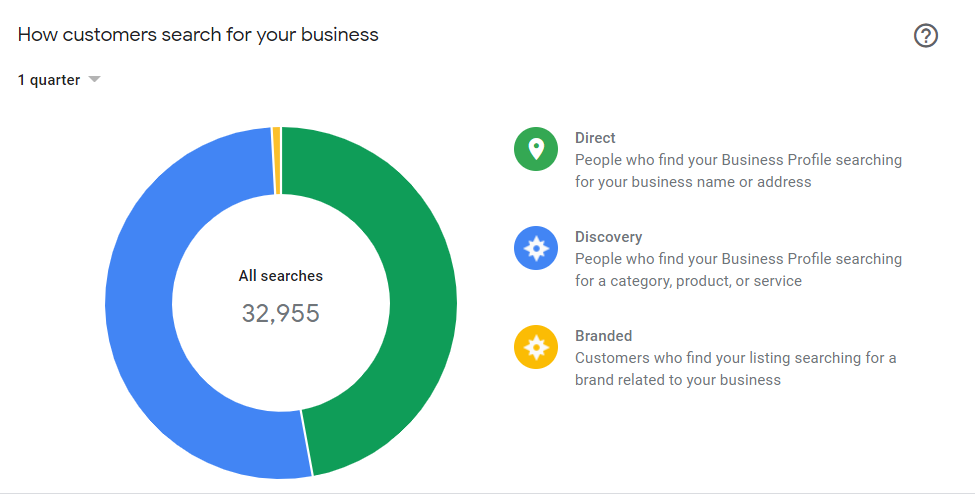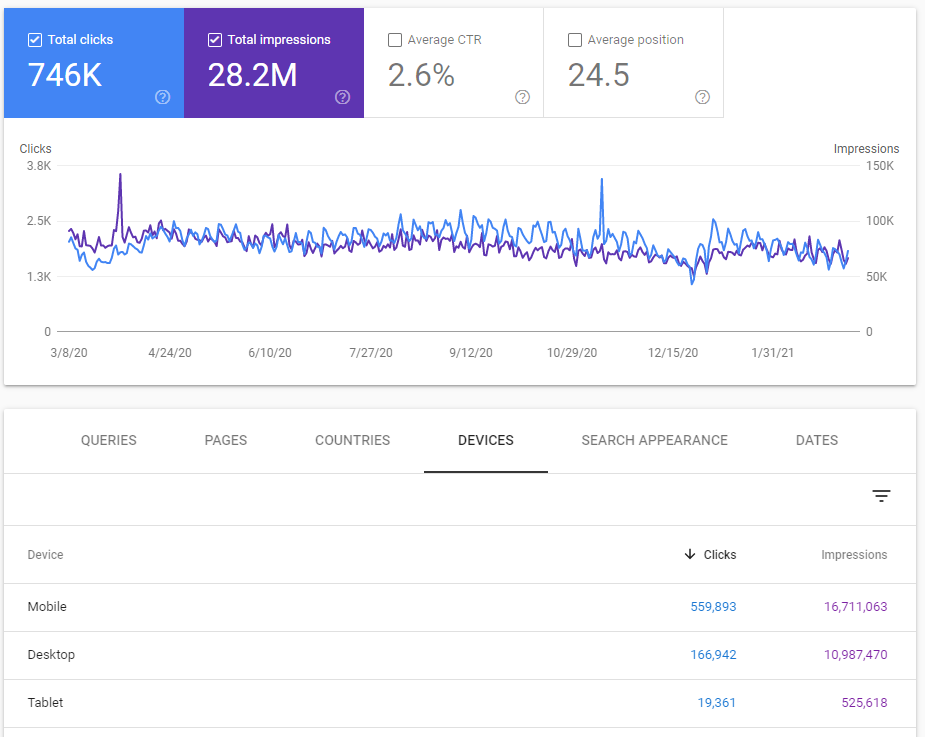
Subscribe to our newsletter!
We don't spam. You will only receive relevant and important tips for you and your business.
Unsubscribe anytime.
By Darren DeYoung
With data, there is power — and by applying an SEO analytics framework you make change possible. If you cannot measure something via proper SEO performance measurement, you can’t improve it. And if you can’t improve, you cannot get better.

To succeed, professional SEO’s need to track everything. From clicks and conversions to calls and form submissions--everything must be tracked to prove the value of SEO.
Measuring SEO is easier said than done as the measurement of search engine visibility involves so many components and variables. It’s very complex and bringing them all together is the art and science of SEO measurement. To do well and succeed, track everything. Or at minimum, determine what metrics are most important for your business and track them regularly.
For starters, there is a ton of data to analyze. Sometimes the data is positive, sometimes it is negative, sometimes it is neutral, and sometimes it is conflicting. This makes it difficult to reach solid conclusions. Since no two businesses are alike, data needs to be prioritized into information that aligns with business strategies, goals, and objectives. Similarly, no two websites are alike and it is important to make sure the goals of the business align with the goals of the website.
If data is not explained or analyzed efficiently, things get messy. Not only does the fancy monthly report become useless, but decision-makers and clients will get frustrated when they cannot decipher what is presented to them. Having a mound of data is great, but it is only valuable if you can comprehend it.
While most of these changes are minor, search engines will occasionally roll out major algorithmic updates that affect search results in significant ways--all for the better, of course.
To grow a business and succeed in SEO, patience is what separates the pretenders from the contenders.
It is crucial to measure SEO over time and focus on long-term SEO outcomes, because SEO does not produce instantaneous results and a solid strategy can take time. When you track everything, you can see the results and measure your SEO performance, like a boss.
For SEOs, a conversion occurs when a website visitor completes a desired goal — and this is the core of conversion-driven SEO tracking that connects traffic to tangible outcomes.
If you sell products, a conversion is a purchase. If the goal of your website is to get people to contact you for a consultation or a quote, a conversion is a contact form submission. If you want people to call you, a conversion is a phone call. Whatever the goal, a conversion is getting someone to respond to your call-to-action.
It’s great to have a lot of people reading your content, but if they aren’t interacting at all, you haven’t captured them as a customer. That is why conversions can be measured in different ways to track success.
Here is an example of how a single conversion can be broken down into a string of multiple conversions.
Tracking conversions is key to increasing sales and growing your business with your website. Your website is a big investment and it should be profitable. But, you will never know if it is profitable if you aren’t tracking its performance.
Conversions can come from many sources, whether that be Organic, Paid Ads, Social or Referral, here are some ways conversions occur.
Probably the most obvious and preferred conversion is an actual purchase. The transaction of funds signifies that a purchase has been made. Sometimes that is the end of the customer journey while other times it is just the beginning.

Contact forms are an effective way to generate new leads. For any business that wants to provide an open dialogue with its customers, contact forms are a must. If you’re hard to reach or not available 24/7, providing contact information on your website is a must, but a contact form is even better. It makes your business reachable. It makes it appear that you are available (even if it’s 3 a.m.). If you aren’t available, visitors will give up and go elsewhere.
Tracking the number of incoming contact forms is a no-brainer, but using this form to improve your SEO is critical. Keeping the contact form as simple as possible will lead to fewer abandoned forms, but, you can use this form to learn how they became interested in your company. In Google Analytics, you can learn where those completing your contact form came from. Did they find you organically? Did they come to your website via a paid ad? Or were they referred from another website? These are all great insights that will help you leverage your SEO strategy.
With geolocation tools, you can see where your users live to get even deeper insights into your customers. Not to mention, the integration of many other tools (i.e. CRM software, email marketing providers, etc.) can bring your contact form to the next level.
Once you find the best way to track your form submissions in an easy-to-read format, be sure you have a process in place to filter out spam submissions. These submissions are from unqualified users (sometimes bots) that will never amount to new business. Once you get rid of the junk, then you get your true count of qualified form submissions.

Chatbots or messaging sessions are bringing new ways of how businesses run marketing. They can give any business a major advantage from customer support to lead generation. With the ever-shrinking attention span of humans, these services are proving to be a great way of creating value and improving customer engagement.
Since these sessions can replace a customer phone call or form submission, it is best that they are tracked. A lot of opportunities exist when you can connect interactions with your chat system and customer service platform with your online analytics platform. For example, by tracking chat data you can see exactly what page users are starting chats on or what questions are being asked the most. If most visitors are asking one or two specific questions from the same webpage, you can make changes to your webpage and add the missing information.
Since email marketing is one of the most effective tools, it is important to monitor your email subscription lists. Tracking email subscriptions gives you insight into how you should be spending your time, how compelling your content is, how to improve current content and the demographics of users who are interested in your content.
Managing your email list growth/loss rate is critical if you want to expand your audience and grow your list. Every email list will have natural decay and attrition which makes it all the more important to grow the subscriber list and keep it at a healthy size. By tracking these conversions and having a set goal, you can know if your efforts are keeping pace, or causing you to fall behind.
When a website user “converts” on your website, that is a behavior that can be tracked. Further, there are a slew of other behaviors and trends that are beneficial for any business as it relates to measuring SEO performance. Wouldn’t it be interesting to know:
How long are users staying on your website? Why are they leaving your website and where are they going? What webpages are most popular? How are converting customers coming to your website?
By tracking these behaviors you can gain insights about your business and one of the best ways to do that is through Google Analytics.
With a little effort, Google Analytics provides many pieces of information to help you understand the behavior of users as they interact with your website. This information will better equip you to make choices about your website and/or future investments into your website. Data from Google Analytics is captured using either first-party cookies, randomly generated IDs, or an SDK for mobile apps.
Just like Google Analytics, Google Tag Manager is free. It is a great way for non-developers to manage tracking codes, control simple and complex rules, and much more. If you want to start tracking a particular form with a heat map, get it done easily with Google Tag Manager and there is no need to wait for a developer to become available.
Social media is a fast, inexpensive, and effective way to reach a significant portion of the world’s population. When your business has a social media presence you must quantify success through effective tracking. Whether your intent is to use social media as a sales channel, as a way to engage with customers, or as a way to build brand recognition, analyze the data and adjust your strategy for better results.
A Google My Business page is paramount for local businesses. Forty-six percent of searches have local intent, making this free-to-use platform the modern-day phonebook. Not only can customers find your business’ name, address, and phone number, but an optimized listing can also drive business.
By using the insights Google My Business provides, you can view
By measuring the performance of this incoming data, you can extract insights that will improve your SEO strategy.

Similarly, Google Search Console is a free service that helps monitor, maintain, and troubleshoot your website’s presence on Google Search Results. It provides tools that help with the day-to-day management of SEO performance while communicating any site issues, errors, and penalties.
But, Google Search Console also provides insights on
Through analysis, you can observe trends so you can stay one step ahead of your website users. For example, what if you observe that an increasing number of visitors are coming to your website from Canada but your business only offers shipping of your products to the United States? This insight may lead you to consider expanding your reach and adding an international shipping option.

Every business should create a measurement plan for SEO performance — ideally feeding data into an SEO performance dashboard so key stakeholders can track progress. Collecting all those data points without focus can be overwhelming; instead, define your framework for tracking SEO metrics that feed into a continuous SEO improvement cycle. A valid plan will help focus the data on the goals of your business.
Think about your business objectives and articulate how you are linking SEO efforts to business goals — then define which metrics matter most. Your plan should include:
Discuss this plan with other stakeholders and make sure they agree with the business objectives. This might include marketers, designers, developers, product designers, and management. By understanding the critical pieces of information, you can better understand the performance of your business.
As a business, it’s critical to understand how people use your website. Understanding SEO performance and user behavior can help you improve the user experience, refine features and content, and build a product that is useful to your users. Several tools can help you measure user behavior, find insights about usage, and drive real change that improves business performance. Do it right. Track what is important so you can grow your business.
At Hoist, we know that tracking your digital marketing performance can be overwhelming. But we are here to help. Let’s chat about your challenges and discuss how you track your SEO performance.